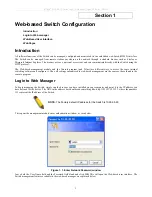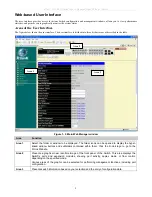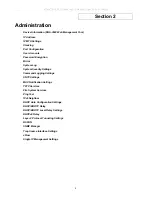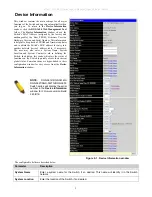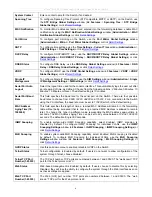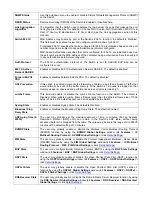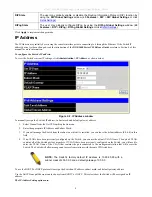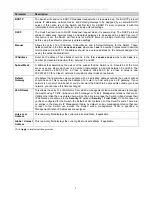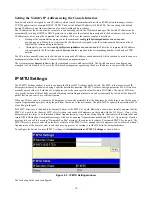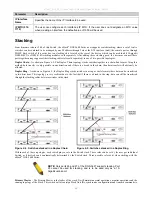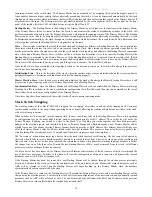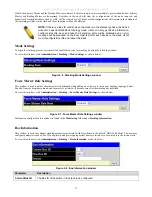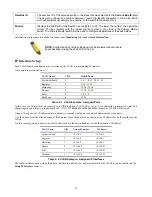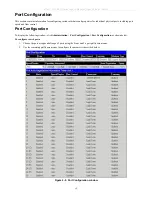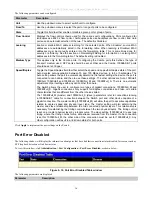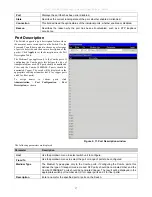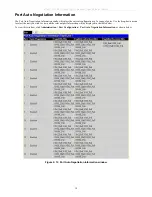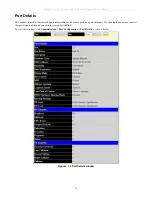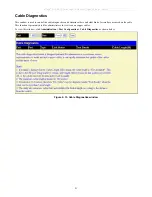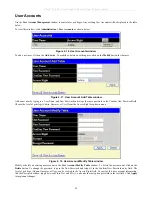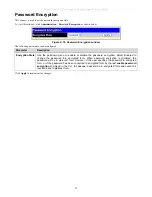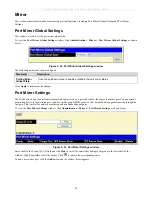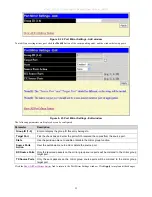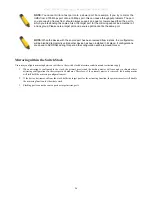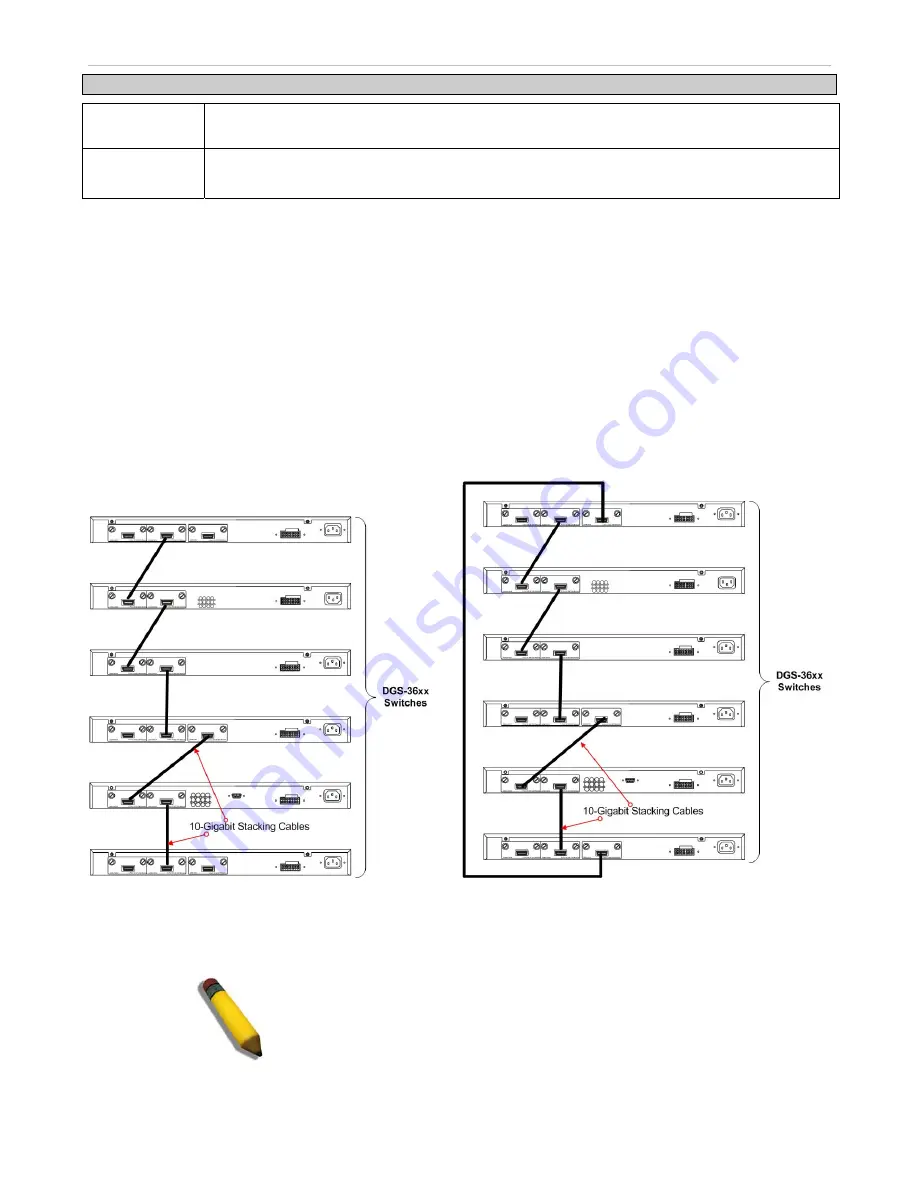
xStack
®
DGS-3600 Series Layer 3 Managed Gigabit Ethernet Switch
Parameter Description
IP Interface
Name
Specifies the name of the IP Interface to be used.
IP MTU (512-
1712)
The user can configure each interface’s IP MTU. If the user does not designate an MTU value
when creating an interface, the default value of 1500 will be used.
Stacking
From firmware release v2.00 of this Switch, the xStack
®
DGS-3600 Series now supports switch stacking, where a set of twelve
switches can be combined to be managed by one IP address through Telnet, the GUI interface (web), the console port or through
SNMP. Each switch of this series has two stacking slots located at the rear of the device, which can be used to add 10-gigabit
DEM-410CX or DEM-410X stacking modules, sold separately. After adding these stacking ports, the user may connect these
ports together using copper or fiber stacking cables (also sold separately) in one of two possible topologies.
Duplex Chain
– As shown in Figure 6-2, The Duplex Chain topology stacks switches together in a chain-link format. Using this
method, data transfer is only possible in one direction and if there is a break in the chain, then data transfer will obviously be
affected.
Duplex Ring
– As shown in Figure 6-3, the Duplex Ring stacks switches in a ring or circle format where data can be transferred
in two directions. This topology is very resilient due to the fact that if there is a break in the ring, data can still be transferred
through the stacking cables between switches in the stack.
Figure 2- 4. Switches stacked in a Duplex Chain Figure 2- 5. Switches stacked in a Duplex Ring
Within each of these topologies, each switch plays a role in the Switch stack. These roles can be set by the user per individual
Switch, or if desired, can be automatically determined by the Switch stack. Three possible roles exist when stacking with the
xStack
®
DGS-3600 Series.
NOTE:
Only ports 26 and 27 of the DGS-3627 support stacking. Port
25 cannot be used for stacking, and is to be used only as a 10-
Gigabit uplink port.
Primary Master
– The Primary Master is the leader of the stack. It will maintain normal operations, monitor operations and the
running topology of the Stack. This switch will also assign Stack Unit IDs, synchronize configurations and transmit commands to
11





